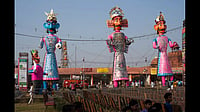Celebrated to offer respect to Mount Kanchenjunga, the third highest mountain in the world, Pang Lhabsol is a cultural bonanza that draws visitors from far and wide to the quaint and beautiful state of Sikkim. Celebrated on the 15th day of the 7th month of the Tibetan calendar, Pang Lhabsol falls on 10th September this year and provides the perfect opportunity to explore this Himalayan state as it revels in festivities.
Pang means ‘to witness’ and the festival marks the consecration of Mount Khangchendzonga as the guardian deity of Sikkim, while commemorating the Treaty of brotherhood between Lepchas and Bhutias. It is believed that the mountain god played an active role in introducing Buddhism into this former kingdom and according to a handwritten biography by Lhatsun Chenpo, the chief propagator of Buddhism in Sikkim, it was divine visions sent by the mountain god which guided him to Demajong, as Sikkim was once called.
The festival is marked by gaiety and celebrations including the stunning spectacle that is the Chham dance. A popular warrior dance, the ‘chaam’ or the ritualistic masked dances are usually organised as part of a bigger festival and performed by the monks of the Tibetan Buddhism order. The theme can range from appeasement of the gods to tales from the life of the divine characters. Wearing elaborate masks and colourful costumes, the performers represent various characters, broadly divided into good and bad, the divine and the devil. The dancers engage in elaborate movements to the accompaniment of traditional musical instruments, including trumpets, drums and cymbals. The chaam dances are known to bring good luck to the viewers too.


























